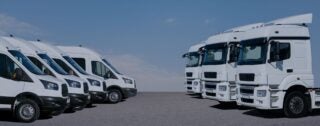- Resources
- Inflation Reduction Act Activation Guide: Fleet Electrification
Resources
Inflation Reduction Act Activation Guide: Fleet Electrification
Published: April 5, 2023 by Giada Mannino
The Inflation Reduction Act (IRA) is a gamechanger for companies that own, operate, or rely on vehicles and aim to reduce their transportation emissions while creating financial value for their businesses.
Produced by EDF in collaboration with Deloitte.

